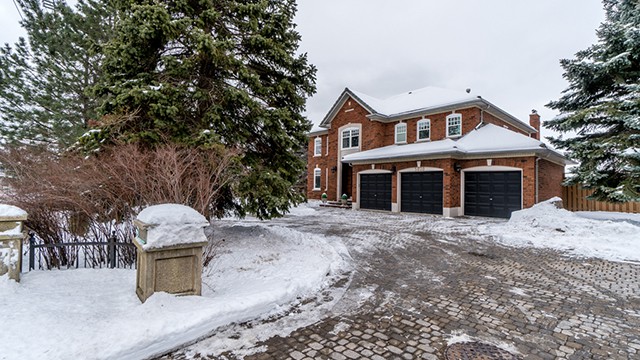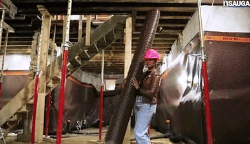Mississauga and Peel Reconsidering Homebuyer’s Loan Program
Published March 8, 2017 at 4:26 am

The Region of Peel, comprised of Brampton, Caledon and Mississauga, is a diverse community with various housing needs as well as available housing options. Housing happens to be one of the policy areas that the Region deals with and housing affordability is a serious issue–especially considering the wild escalation in home prices over the last few years. How Peel Region deals with this is crucial, as it expects more people to move into it within the next few decades.
In terms of housing affordability, the question is: do you dedicate resources to providing more affordable housing for low income residents, or do you take measures to help everyone buy their own home? One method that the Region entertained in addressing the difficulties surrounding home ownership was the Peel Region Homebuyer Loan Program. According to the Region, the Home in Peel Affordable Ownership Program (as it was officially called) was designed to give low to moderate income residents currently renting in the Region of Peel (Brampton, Caledon or Mississauga) an opportunity to qualify for down payment loan assistance to buy a home in Peel.
This program may assist eligible applicants who have a maximum gross (pre-tax) household income of $88,900 to purchase a resale home in the Region of Peel up to a maximum purchase price of $330,000. More obvious qualifications include being at least 18 or older, being a Canadian citizen, residing in Peel as a renter looking to buy one principal residence, and able to qualify for a mortgage.
While this may sound like an innovative and educational program in helping first time homebuyers navigate the treacherous waters of proper home ownership, it’s unfortunate because as of December 2016, the Region of Peel suspended the program. Beth Storti, the manager who oversees Peel Region’s loan program, said there was not enough funding in recent years to meet demand from aspiring homeowners, in favour of putting more money in social housing.
During the February 23 council meeting, Peel residents Rochelle Campbell and Tamika and Dianne Boyce came before regional council to make a presentation asking that the council reinstate the program. They made a rather impassioned plea but also a detailed, concise presentation, indicating they did the research regarding transitioning from being renters to homeowners. The only thing they asked for was the reinstatement of the program for the one year it was cancelled without notice. They also requested that they consider giving the Boyce’s and Campbell access to the program when a participant sells their home and returns the money to Peel Region.
Here are some of the responses from the members of council, in response to Councillor Gael Miles’ request to move a motion to have this program referred back to staff to see if there was a source of funding for the loan program:
Councillor Nando Iannicca revealed that he and his son combined could not even qualify for a mortgage. For someone who earns a $100,000 a year and resides in a $1 million home he co-owns along with his wife and the bank, that’s quite shocking.
“Something is wrong, that our children can’t afford to live in Mississauga,” Iannicca exclaimed. He also reminded everyone that the program was not just giving people money to buy a house; they pay it back in return. “This is the most logical investment that we can make,” the Ward 7 councillor concluded, saying something must be done in the absence of action from the provincial and federal governments on the housing file.
Mississauga’s Ward 5 councillor Carolyn Parrish, who is planning a summit regarding affordable housing and actively fighting for Peel Region’s ‘fair share’, asked what happens to the increased value of a house when people are selling their home. In response, staff answered that there is an arrangement that the equity is split between the applicant and Peel Region. Depending on how long they’ve been in the home, the resident repays the principal loan that’s outstanding, based on the MPAC (Municipal Property Assessment Corporation) value. The Region receives a piece of the equity back, and the resident goes on to buy another home. The piece of equity is based on the number of years the loan is outstanding.
Councillor Parrish then asked, hypothetically, what happens if someone has been living in a home for 10 years, and the price goes up $300,000. In that case, how much will the Region get back? Regional staff’s answer was that, on average, they were getting back five to six per cent of the equity. With 12,000 people on a housing waiting list and laser focus on solving the affordable housing crisis, Parrish believes that resources should be going to preventing people from sleeping on the streets or on other people’s couches. Her comments towards the young women, while incredibly sincere to their plight, was “you seem better off than most people who are not, so I’m sorry I’m not voting to reinstate the program.” At least she’s consistent.
Councillor Elaine Moore inquired about whether there was a waiting list, and staff replied it was first come first serve, so it was not a long wait list. Some members believed more money was needed, such as Councillor George Carlson, who said the program should be in the billion dollar range rather than just the millions. But Carlson did say this should be an issue that the provincial and federal governments should take a lead on.
In the end, Regional Council voted to send the issue back to the staff to reexamine the loan program to see if reinstating it was possible. I understand the plight of low income residents when it comes to access to affordable housing, and I have no doubt the Region could use more of it. But it’s intriguing that there was this program that allowed those very people to pull themselves out of just one level of living and to advance into true homeownership. It’s not like money is just being thrown at the program; there were accountability mechanisms in place to ensure that money loaned out was paid back to the Region.
Until the two other levels of government take a more prominent role in the affordable housing file, then perhaps the Region can reinstate the homebuyers loan program so they can focus on helping people become homeowners while affordable housing gets taken care of by the province or Ottawa. Perhaps Parrish’s much lauded upcoming municipal summit to address issues of affordable housing could start shaking the federal government into action.
insauga's Editorial Standards and Policies advertising





